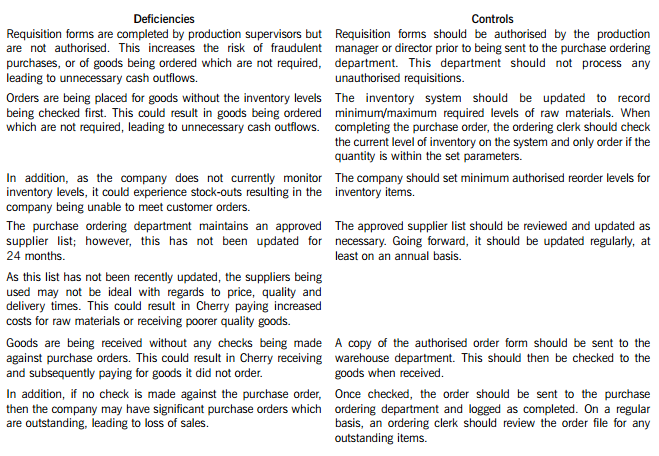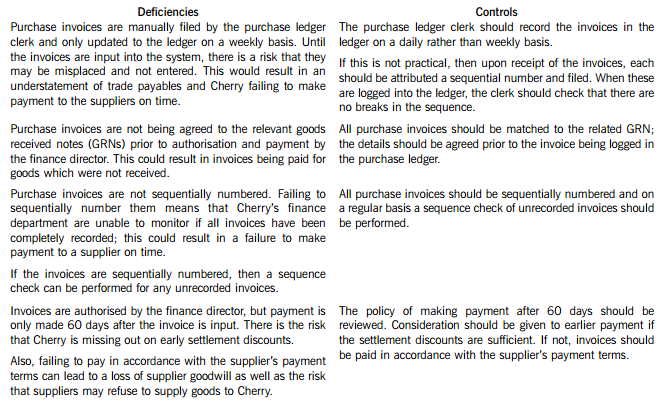号外!号外!北京市2020年ACCA考试准考证可以打印啦!这些打印流程你知道吗?
发布时间:2020-01-08
2020年已经过去了一个多周了,除去周末节假日和春节假日,留给大家备考ACCA考试的时间也不多了,相信现在有很多ACCAer们已经开始埋头苦读、认真备考了,但是51题库考试学习网在这里提醒大家:认真备考的同时千万不要忘了一个最最最重要的事情:打印准考证!“新手”ACCAer不知道打印的流程也不用担心,51题库考试学习网会把大家想要知道的咨询都分享给大家:
ACCA考试准考证打印是什么时候?
首先,ACCAer们需要注意的第一件事情就是:ACCA各科目的准考证必须学员自行通过ACCA全球官网下载,原则上不允许从第三方网站上下载相关准考证。2020年3月ACCA考试准考证目前尚未开放下载,请大家等待,ACCA考试准考证一般来说会在考试前2-3周时间开放,请各位ACCAer们注意时间,以免错过打印的时间。打印的步骤如下所示:
1、在ACCA官网主页http://www.accaglobal.com/en.html点击MYACCA,进入登录页面:
2、进入MYACCA账户后点击左侧的EXAM
ENTRY:
3、进入个人页面后点击左侧的“DOCKET”;
4、点击下方红色的“Access your
docket”进入准考证界面;
5、点击“Access your
docket” ,在随后出现的页面中选择学习方式及培训机构,培训机构选择“Beijing Champion Hi-Tech Co. Ltd.Dist...”(2019年3月考季起,ACCA全球统考准考证将不会再有个人照片!)
6、 在弹出的页面或者提示栏中选择“保存”(或是“下载”) ,准考证会以 pdf 格式显示。(一个考季内,第一次进入准考证界面时会出现以下“调查”,按实际情况填写并保存即可。)
7.下载好以后,打开文件,仔细核对准考证上的个人信息及考试信息,准考证共2页。(建议:以正反面的形式,打印在一张纸上)准考证会以 pdf 格式显示,打印完成后,考试时带上您的准考证、身份证/护照参加考试即可。
准考证打印相关注意事项有哪些?
参加笔试的考生,记得要带黑色圆珠笔。
不能用水笔的,一定是黑色圆珠笔。准考证打印好后一定要与其他考试物品(如:黑色圆珠笔,计算器等)放在一起。考试那天,把这些一并带上,另外,不要忘了带身份证(或护照)!
准考证是每位ACCA学员参加考试时必须的进场证明,所以我们要注意的准考证数量要与我们参加的考试科数相同,此外,还要仔细核对报考科目和考试地点有无错误。
需要注意的是:准考证打印没有要求彩色的,所以可以选择黑白也可选择彩色的打印。同时,准考证的要求双面打印的,这两点要尤其重视一下,提前做好准备,预防出现不必要的麻烦。
看完以上的这些信息之后,ACCAer们是不是顿时觉得打印准考证不是很难呀?51题库考试学习网在这里由衷地告诉大家:“只有一条路不能选择——那就是放弃的路;只有一条路不能拒绝——那就是成长的路。”加油~
下面小编为大家准备了 ACCA考试 的相关考题,供大家学习参考。
(c) (i) Provide three examples of personal financial planning protection products that would be of use in
Henry’s situation. Justify your selections by reference to the type of protection provided. (6 marks)
(c) (i) Protection products
Henry is still working and has a mortgage to support. He therefore needs to protect not only his assets but also cover
any debt, or the ability to repay. The following protection policies are relevant to Henry’s situation.
Life assurance
This is a form. of insurance that pays out on a chargeable event, usually death. The main types are:
– Term Assurance which provides cover for a fixed term with the sum assured payable only on death. No investment
benefits or payments arise on survival.
– Whole of Life Assurance where the policy provides life protection. The sum assured is payable on death at any time
and usually some form. of investment benefit will accrue in the form. of a surrender value.
A qualifying policy will give a tax-free lump sum that could, for example, be used to repay the mortgage.
Permanent health insurance
Permanent health insurance policies are designed to provide the policyholder with a benefit if s/he is unable to work
through sickness or if s/he needs medical expenses or long-term care.
This would provide Henry with an income in the event of illness – again useful given his mortgage, and would avoid
the need to liquidate other assets to pay the mortgage or ongoing costs.
Critical illness insurance
These policies provide a capital sum where a critical illness (from a large range listed in the policy) is diagnosed.
For the same reasons above, Henry should consider this in conjunction with permanent health insurance.
Note: Marks will also be given for other relevant protection products, e.g. specific mortgage protection insurance linked
to an event other than death.
Cherry Blossom Co (Cherry) manufactures custom made furniture and its year end is 30 April. The company purchases its raw materials from a wide range of suppliers. Below is a description of Cherry’s purchasing system.
When production supervisors require raw materials, they complete a requisition form. and this is submitted to the purchase ordering department. Requisition forms do not require authorisation and no reference is made to the current inventory levels of the materials being requested. Staff in the purchase ordering department use the requisitions to raise sequentially numbered purchase orders based on the approved suppliers list, which was last updated 24 months ago. The purchasing director authorises the orders prior to these being sent to the suppliers.
When the goods are received, the warehouse department verifies the quantity to the suppliers despatch note and checks that the quality of the goods received are satisfactory. They complete a sequentially numbered goods received note (GRN) and send a copy of the GRN to the finance department.
Purchase invoices are sent directly to the purchase ledger clerk, who stores them in a manual file until the end of each week. He then inputs them into the purchase ledger using batch controls and gives each invoice a unique number based on the supplier code. The invoices are reviewed and authorised for payment by the finance director, but the actual payment is only made 60 days after the invoice is input into the system.
Required:
In respect of the purchasing system of Cherry Blossom Co:
(i) Identify and explain FIVE deficiencies; and
(ii) Recommend a control to address each of these deficiencies.
Note: The total marks will be split equally between each part.
Cherry Blossom Co’s (Cherry) purchasing system deficiencies and controls


1 The scientists in the research laboratories of Swan Hill Company (SHC, a public listed company) recently made a very
important discovery about the process that manufactured its major product. The scientific director, Dr Sonja Rainbow,
informed the board that the breakthrough was called the ‘sink method’. She explained that the sink method would
enable SHC to produce its major product at a lower unit cost and in much higher volumes than the current process.
It would also produce lower unit environmental emissions and would substantially improve product quality compared
to its current process and indeed compared to all of the other competitors in the industry.
SHC currently has 30% of the global market with its nearest competitor having 25% and the other twelve producers
sharing the remainder. The company, based in the town of Swan Hill, has a paternalistic management approach and
has always valued its relationship with the local community. Its website says that SHC has always sought to maximise
the benefit to the workforce and community in all of its business decisions and feels a great sense of loyalty to the
Swan Hill locality which is where it started in 1900 and has been based ever since.
As the board considered the implications of the discovery of the sink method, chief executive Nelson Cobar asked
whether Sonja Rainbow was certain that SHC was the only company in the industry that had made the discovery and
she said that she was. She also said that she was certain that the competitors were ‘some years’ behind SHC in their
research.
It quickly became clear that the discovery of the sink method was so important and far reaching that it had the
potential to give SHC an unassailable competitive advantage in its industry. Chief executive Nelson Cobar told board
colleagues that they should clearly understand that the discovery had the potential to put all of SHC’s competitors out
of business and make SHC the single global supplier. He said that as the board considered the options, members
should bear in mind the seriousness of the implications upon the rest of the industry.
Mr Cobar said there were two strategic options. Option one was to press ahead with the huge investment of new plant
necessary to introduce the sink method into the factory whilst, as far as possible, keeping the nature of the sink
technology secret from competitors (the ‘secrecy option’). A patent disclosing the nature of the technology would not
be filed so as to keep the technology secret within SHC. Option two was to file a patent and then offer the use of the
discovery to competitors under a licensing arrangement where SHC would receive substantial royalties for the twentyyear
legal lifetime of the patent (the ‘licensing option’). This would also involve new investment but at a slower pace
in line with competitors. The licence contract would, Mr Cobar explained, include an ‘improvement sharing’
requirement where licensees would be required to inform. SHC of any improvements discovered that made the sink
method more efficient or effective.
The sales director, Edwin Kiama, argued strongly in favour of the secrecy option. He said that the board owed it to
SHC’s shareholders to take the option that would maximise shareholder value. He argued that business strategy was
all about gaining competitive advantage and this was a chance to do exactly that. Accordingly, he argued, the sink
method should not be licensed to competitors and should be pursued as fast as possible. The operations director said
that to gain the full benefits of the sink method with either option would require a complete refitting of the factory and
the largest capital investment that SHC had ever undertaken.
The financial director, Sean Nyngan, advised the board that pressing ahead with investment under the secrecy option
was not without risks. First, he said, he would have to finance the investment, probably initially through debt, and
second, there were risks associated with any large investment. He also informed the board that the licensing option
would, over many years, involve the inflow of ‘massive’ funds in royalty payments from competitors using the SHC’s
patented sink method. By pursuing the licensing option, Sean Nyngan said that they could retain their market
leadership in the short term without incurring risk, whilst increasing their industry dominance in the future through
careful investment of the royalty payments.
The non-executive chairman, Alison Manilla, said that she was looking at the issue from an ethical perspective. She
asked whether SHC had the right, even if it had the ability, to put competitors out of business.
Required:
(a) Assess the secrecy option using Tucker’s model for decision-making. (10 marks)
(a) Tucker’s framework
Is the decision:
Profitable? For SHC, the answer to this question is yes. Profits would potentially be substantially increased by the loss of all
of its competitors and the emergence of SHC, in the short to medium term at least, as a near monopolist.
Legal? The secrecy option poses no legal problems as it is a part of normal competitive behaviour in industries. In some
jurisdictions, legislation forbids monopolies existing in some industries but there is no indication from the case that this
restriction applies to Swan Hill Company.
Fair? The fairness of the secrecy option is a moral judgment. It is probably fair when judged from the perspective of SHC’s
shareholders but the question is the extent to which it is fair to the employees and shareholders of SHC’s competitors.
Right? Again, a question of ethical perspective. Is it right to pursue the subjugation of competitors and the domination of an
industry regardless of the consequences to competitors? The secrecy option may be of the most benefit to the local community
of Swan Hill that the company has traditionally valued.
Sustainable or environmentally sound? The case says that the sink method emits at a lower rate per unit of output than the
existing process but this has little to do with the secrecy option as the rates of emissions would apply if SHC licensed the
process. This is also an argument for the licensing option, however, as environmental emissions would be lower if other
competitors switched to the sink method as well. There may be environmental implications in decommissioning the old plant
to make way for the new sink method investment.
声明:本文内容由互联网用户自发贡献自行上传,本网站不拥有所有权,未作人工编辑处理,也不承担相关法律责任。如果您发现有涉嫌版权的内容,欢迎发送邮件至:contact@51tk.com 进行举报,并提供相关证据,工作人员会在5个工作日内联系你,一经查实,本站将立刻删除涉嫌侵权内容。
- 2020-01-10
- 2020-01-08
- 2020-04-11
- 2020-01-10
- 2020-01-10
- 2020-08-14
- 2020-01-08
- 2020-09-04
- 2020-09-04
- 2021-01-01
- 2020-01-10
- 2020-01-09
- 2020-08-15
- 2020-01-09
- 2020-01-10
- 2020-01-10
- 2020-01-10
- 2020-01-09
- 2020-01-09
- 2020-01-08
- 2020-09-04
- 2020-01-09
- 2021-04-17
- 2020-09-04
- 2020-01-09
- 2021-01-01
- 2020-09-04
- 2020-01-08
- 2020-01-08
- 2020-01-09